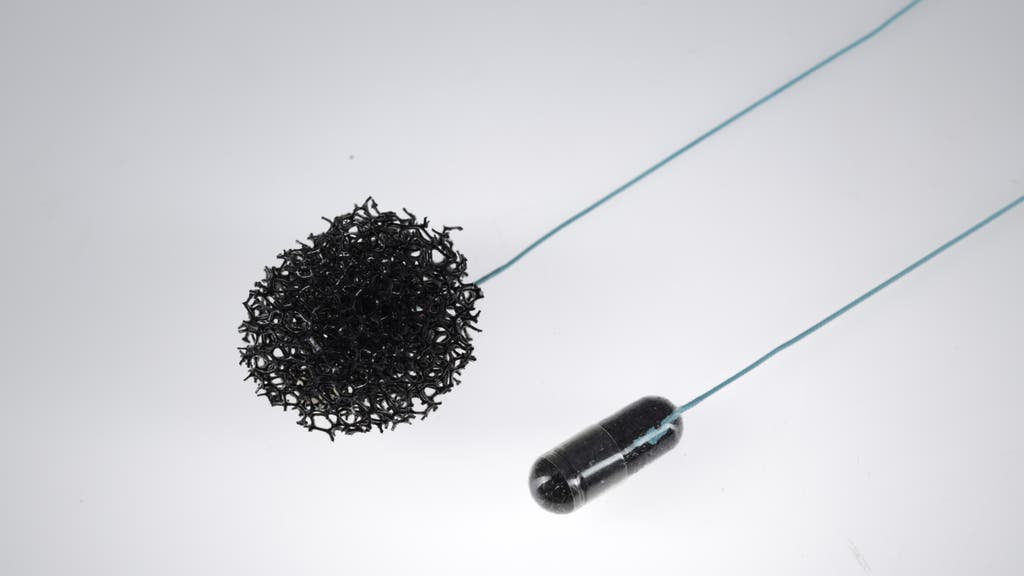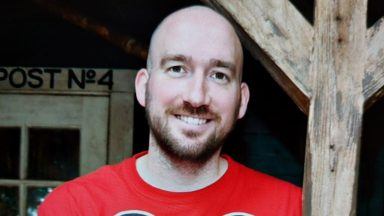A “sponge on a string” device used to screen patients for cancer has been rolled out to all Scottish mainland health boards.
The Cytosponge device can be offered to some people as an alternative to endoscopy and can be used to check Barrett’s Oesophagus patients for signs of cancer.
The procedure involves patients swallowing a small pill attached to a thread which then expands into a little sponge and is pulled back up, collecting cells on the way to be analysed for any abnormalities.
It has now been rolled out across all mainland Scottish health boards after initially being introduced in NHS Greater Glasgow and Clyde, NHS Lanarkshire and NHS Forth Valley last year.
Clinicians said the pandemic has had serious repercussions both for patients waiting for diagnostic endoscopy and Barrett’s Oesophagus patients needing surveillance, with some at risk of developing cancer without investigation.
It is hoped that using the Cytosponge device will help speed up the process.
Professor Grant Fullarton, clinical lead in Scotland, said: “While the Covid-19 pandemic has aggravated the issues surrounding Barrett’s Oesophagus and endoscopy, it has also fast-tracked this change to the diagnostic pathway.
“Cytosponge helps specialist teams to triage Barrett’s Oesophagus and find which patients, with established pre-malignancy in the oesophagus, require endoscopy and treatment.
“We’ve already detected pre- and early cancer in patients, and early detection of this kind of cancer allows less invasive curative treatment involving endoscopic methods rather than major surgery.
“Such early diagnosis at scale across Scotland could revolutionise the outcome of what is now a poor outcome disease.”
The Cytosponge can collect cells in less than 10 minutes and does not require patients to be sedated.
Julie MacDonald, a nurse endoscopist at Forth Valley Royal Hospital in Larbert, said: “In certain circumstances it can be offered to some patients as an alternative to endoscopy.
“It is a simple, safe, reliable test that can be conducted in an outpatient setting.”
Elizabeth McEwan, 66, who had the procedure at Forth Valley Royal Hospital, said it was a “very easy and very comfortable alternative to endoscopy”.
She said: “The device is put at the back of your throat to swallow with a big gulp of water. There was no gagging sensation as the string it’s attached to is tiny.
“Five minutes later the nurse asked if I was happy with her pulling it back up and if I would like some throat numbing spray, which I agreed to; it’s like a minty spray which numbs the throat as it’s pulled back out.
“It was about eight minutes from swallowing it and I could walk straight out.
“I have had my Cytosponge results back and they are all clear, no cancer or abnormal cells, which I am really reassured about.”
Cytosponge inventor Professor Rebecca Fitzgerald, of the MRC Cancer Unit at the University of Cambridge, said: “NHS Scotland were the first region to implement Cytosponge during Covid and they’ve used it for two groups of patients.
“Patients with Barrett’s Oesophagus needing monitoring to see whether any cancerous changes are developing to prioritise them for endoscopy and also to take patients presenting with new symptoms.
“And so we’ve trained the nurses now across all the health boards in Scotland who are widely adopting and implementing this test and the samples are sent down to the Cyted laboratories for analysis and the results are sent back to the patients within a couple of weeks.”
Health secretary Humza Yousaf said: “Cytosponge is part of an accelerated rollout of innovative technologies being embraced by Scotland’s NHS to support the resumption and recovery of vital health services that had to be paused because of the pandemic.
“It is a much simpler and more patient-friendly test than endoscopy that enables faster diagnosis of patients at risk of pre or early cancer, without the need for them to undergo a more invasive procedure.”
Follow STV News on WhatsApp
Scan the QR code on your mobile device for all the latest news from around the country




























